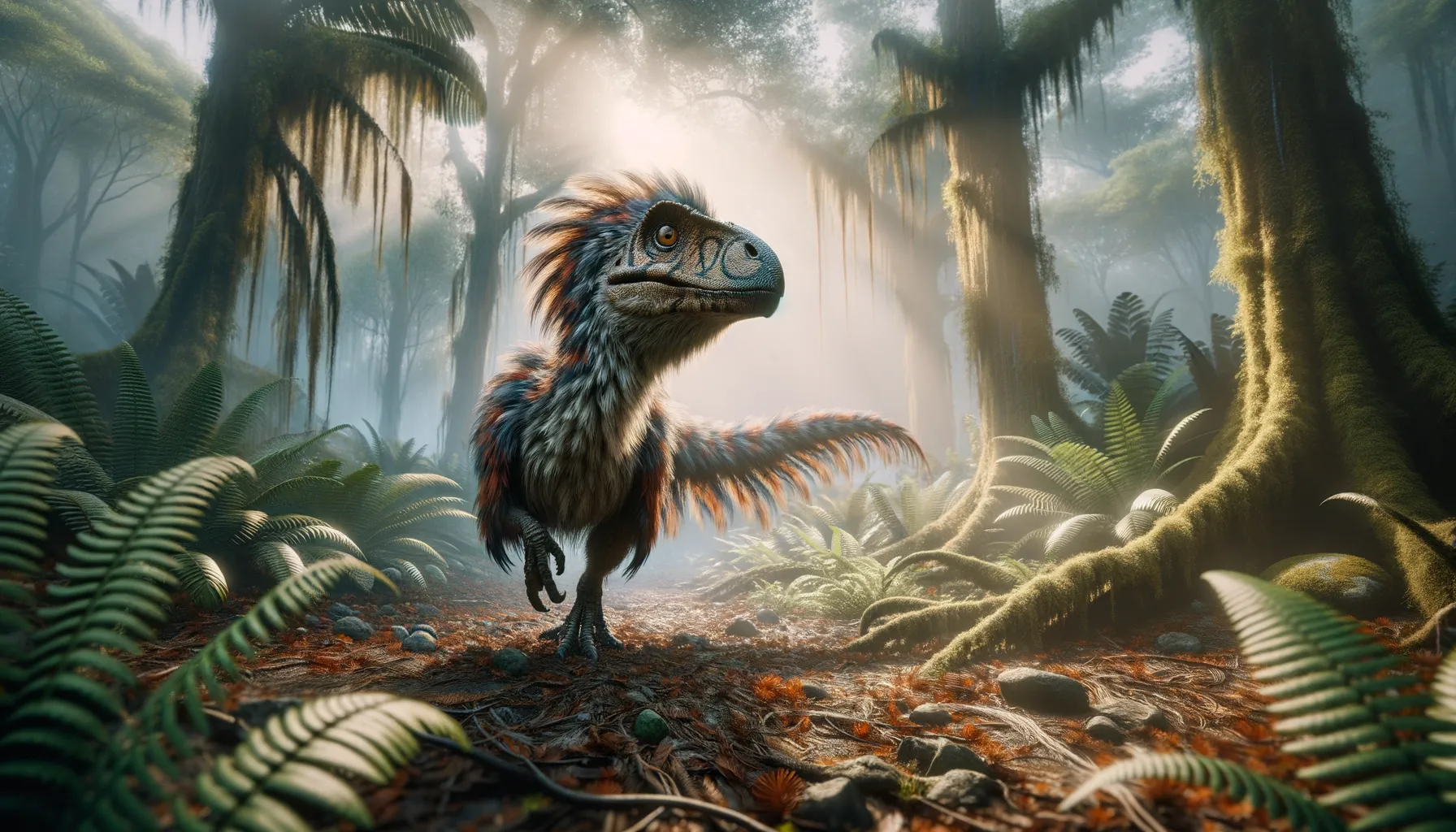
Wellnhoferia
Explore the dawn of avian evolution.
Period
Jurassic
Length
Reaches up to 50 centimeters.
Height
Approximately 25 centimeters tall.
Weight
Around 1 kilogram.
Wellnhoferia was a small, feathered dinosaur from the late Jurassic period. Known for its avian characteristics, it shares similarities with the well-studied Archaeopteryx. This creature offers crucial insights into the evolution of modern birds. Its fossils are rare, providing glimpses into ancient behaviors and adaptations. Discovered in what is now Germany, Wellnhoferia lived in a world teeming with diversity, amidst lush forests and open spaces.
Diet
Wellnhoferia's diet primarily consisted of small reptiles, insects, and possibly fruits or seeds. Its sharp teeth were well-suited for grasping and consuming prey, implying a versatile omnivorous diet.
Hunting
It likely hunted small prey stealthily amidst dense vegetation, relying on its dexterity and sharp beak to catch unsuspecting targets. Quick reflexes were crucial in snatching agile insects or reptiles, supporting its survival in a competitive ecosystem.
Environmental challenges
Wellnhoferia faced the challenge of surviving in a dynamic environment with shifting food availability. Its small size made it vulnerable to larger predators, necessitating keen senses and agility for evasion. Climate changes could have also affected its habitat, requiring adaptability over generations. Daily life involved constant vigilance against both terrestrial and aerial threats.
Speed
Moderate speed, limited by its size and ground proficiency.
Lifespan
Estimated up to two decades.
First discovery
Discovered in the late 20th century in Germany.
Fun Facts
- Wellnhoferia was a dinosaur that lived around 150 million years ago during the late Jurassic period.
- It was similar in appearance to the famous Archaeopteryx, sharing some bird-like features.
- Wellnhoferia was named in honor of Peter Wellnhofer, a renowned paleontologist known for his work on early birds.
- Fossils of Wellnhoferia were found in Germany, where many well-preserved specimens provide insight into the evolution of birds.
- Unlike some of its Jurassic relatives, Wellnhoferia had better developed flight capabilities, hinting at the beginnings of avian evolution.
- This dinosaur was small and lightweight, which would have helped it glide or even make short flights.
- Wellnhoferia showcases the transitional features between dinosaurs and the first birds, making it an exciting subject for paleontologists studying the origin of avian species.
Growth and Development
Young Wellnhoferia likely grew rapidly to reach maturity, benefiting from the diverse food sources available. Developing feathers would provide insulation and aid in future mobility. As they matured, their physical characteristics would sharpen, tuning them for survival. Parental care might have been minimal, with offspring relying on instinctual survival mechanisms.
Habitat
Residing in diverse environments, Wellnhoferia lived amidst forests and open refuges. These regions provided ample food and nesting opportunities, vital for its sustenance and breeding. The presence of water bodies might have further enriched its surroundings. Its habitats also offered shelter from predators, aiding its survival.
Interaction with other species
Wellnhoferia had to coexist with several other prehistoric species, ranging from small mammals to larger carnivorous dinosaurs. Its interactions were likely competitive, especially in resource-limited periods. It might have engaged in symbiotic relationships or encounters with other avian-like species. The competition for food and shelter played a significant role in shaping its behavior.
Natural lifespan
Wellnhoferia lived for approximately 15-20 years.
Reproduction
Reproduction likely involved laying small clutches of eggs in secluded nests for protection. Incubation duties could have been shared by both parents, ensuring high hatch rates. Young Wellnhoferia were probably quick to develop, gaining independence early. Their adaptive reproductive strategies might have compensated for environmental pressures.
Social behaviour
Wellnhoferia possibly exhibited solitary tendencies, as might be typical for small predatory species. Occasional social interactions could occur during feeding or mating cycles. Communications with conspecifics might have included vocalizations or displays. Such behaviors ensured survival while maintaining low visibility to predators.
Fossil locations
Wellnhoferia fossils are primarily found in the Solnhofen limestone deposits of Germany. These sites are renowned for their exquisite fossil preservation, showcasing the fine details of this prehistoric bird-like dinosaur. Additional findings have bolstered its scientific significance, aiding our understanding of avian evolution.
